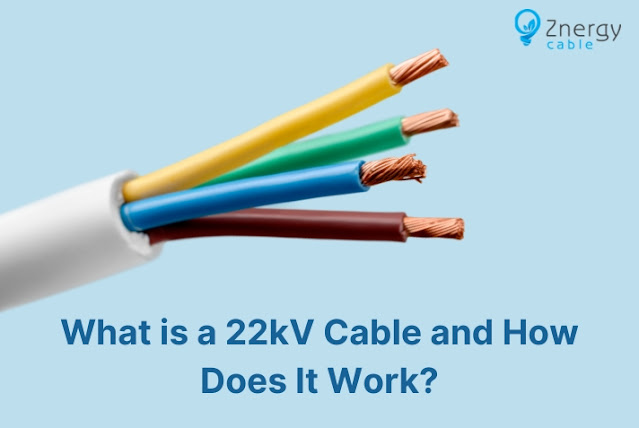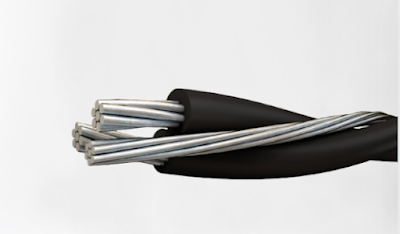What is a 22kV Cable and How Does It Work?
To properly carry electricity from generation sources to end customers, the world of electrical power distribution relies on a large network of cables.
Among the many types of power cables, 22kv cables play an important role in medium-voltage energy transmission.
In this intriguing blog, we will delve into the fascinating world of 22 kV cables, investigating their design, operating principles, and the huge impact they have on our daily lives.
What is 22kV Cable
A 22kv cable is a medium-voltage power cable that is designed to handle electrical energy at a voltage of 22 kilovolts.
It belongs to the medium-voltage cable family, which normally operates between 1 kV and 33kv cable. Voltage ratings totally depend on the electrical cable manufacturer.
These cables are appropriate for a wide range of applications, including power distribution in residential neighborhoods, commercial complexes, industrial sites, and even renewable energy projects, due to their 22 kV rating.
Construction of 22KV cable
A 22 kV cable is made up of many layers that are meant to offer insulation, protection, and mechanical strength. The following are the essential components:
Conductor
The conductor, which is normally constructed of high-quality copper or aluminum, is at the heart of the cable. The electrical current is carried by the conductor, ensuring effective power transmission.
Insulation
A layer of insulation surrounds the conductor, preventing electricity from escaping and protecting against short circuits and electrical faults.
Insulation materials that are commonly used include cross-linked polyethylene (XLPE) and ethylene propylene rubber (EPR).
Metallic Shielding
A metallic shield is put around the insulation to provide an additional layer of protection. The shielding prevents external electromagnetic interference from entering and decreases electrical losses.
Armour
Some 22 kV cables are outfitted with an armored coating, which is commonly composed of steel wires or tapes.
This armor provides mechanical strength and protects the cable from unintentional damage, impact, or external force.
The final layer is the outer sheath, which acts as a protective coating. It protects the cable against moisture, chemicals, and environmental influences, ensuring its durability and dependability.
Working and method
A 22 kV cable's principal role is to transport electrical power from one location to another.
The cable transports electrical current to its destination when it is connected to a power source, such as a substation or transformer. The cable's high-quality insulation prevents leakage and guarantees that electricity travels along the correct path.
The electrical current is carried by the conductor inside the cable, while the insulation avoids energy loss during transmission.
The metallic shielding mitigates the impact of external electromagnetic fields, reducing interference and maintaining a steady flow of electricity.
Furthermore, the outer wrapping shields the cable from external conditions, limiting damage that could impair power transmission.
The Benefits and Importance of 22kV Cables
The use of 22 kV cables provides various benefits and has a significant impact on current electrical distribution systems.
Efficient power transmission
22 kV cables provide an efficient and dependable means of transporting medium-voltage electricity over large distances with minimal power losses.
Versatility
These cables can be used for a variety of applications, ranging from urban power distribution networks to industrial installations and renewable energy projects.
Increased Safety
The insulation and shielding of 22kv cables lower the risk of electrical failures, short circuits, and fires, ensuring the safety of both infrastructure and individuals.
Increased capacity
As energy demands rise, power distribution networks can expand and develop because 22 kV cables can handle heavier electrical loads.
Future-proofing
These cables are built to last and offer a dependable option for ongoing power distribution requirements.
Conclusion
Without the extraordinary capabilities of 22 kV cables, the world of electrical power distribution would not be the same.
These cables are essential for supplying energy to residences, businesses, and industries all over the world because of their effective transmission, dependable insulation, and sturdy construction.
22 kV cables will continue to be a necessary component as energy demands rise and technology develops further, ensuring a steady supply of power for future generations.
If you are searching for cable manufacturers in Australia, then Znergy Cable is the best option for you.




Comments
Post a Comment